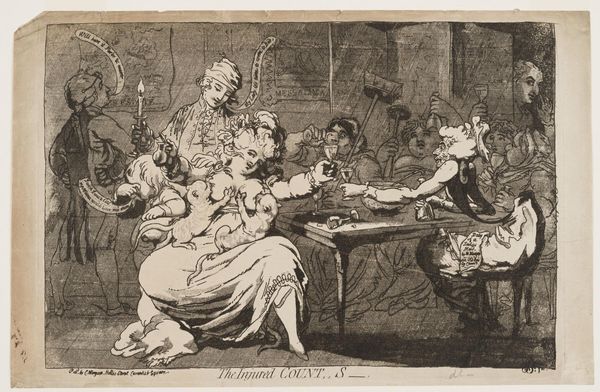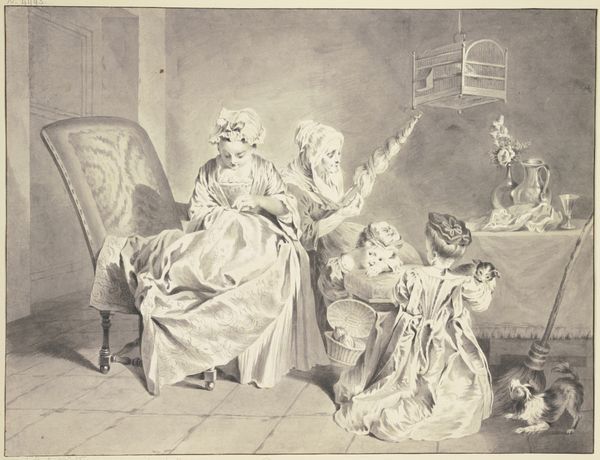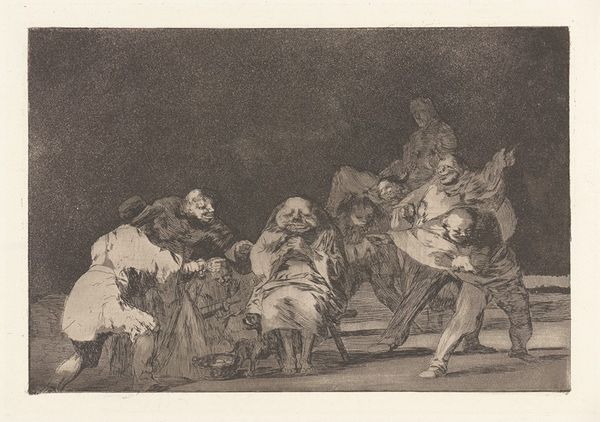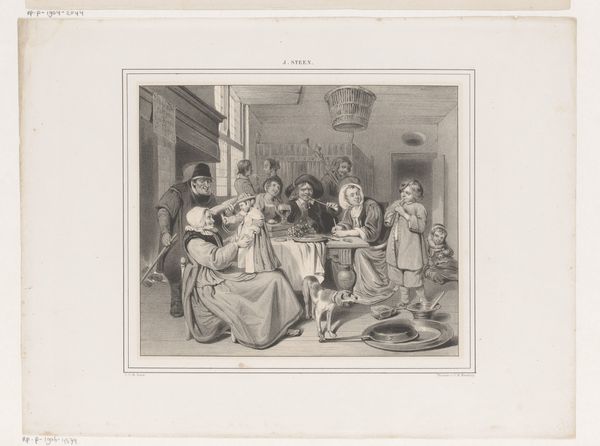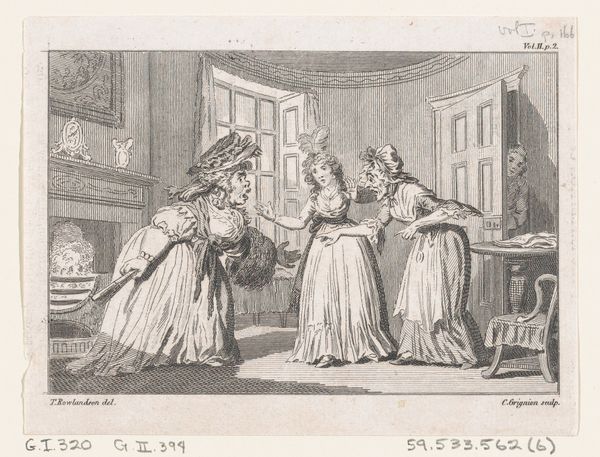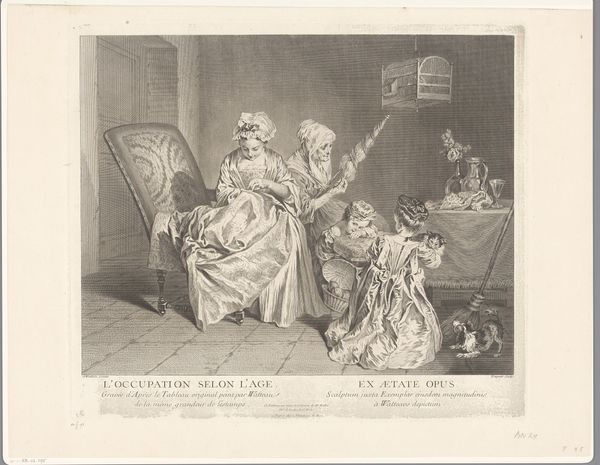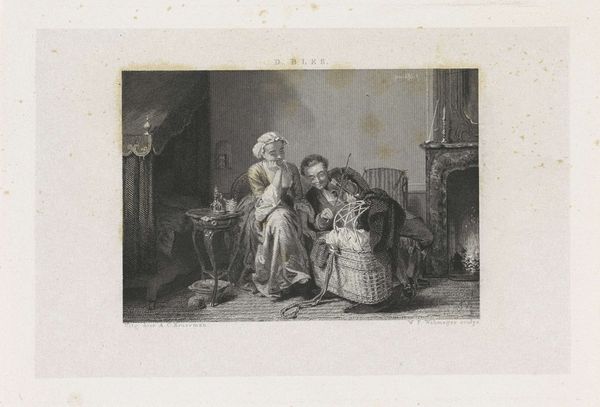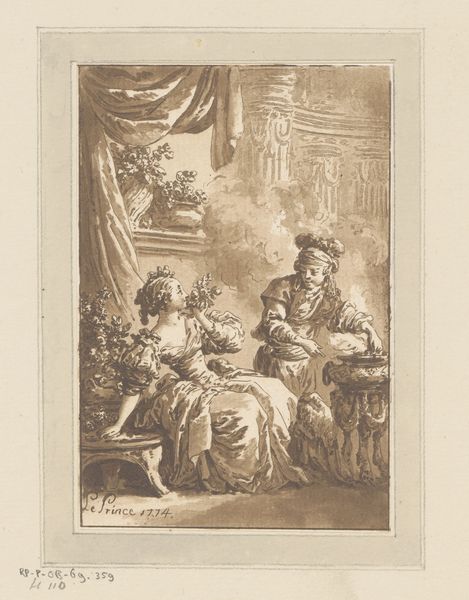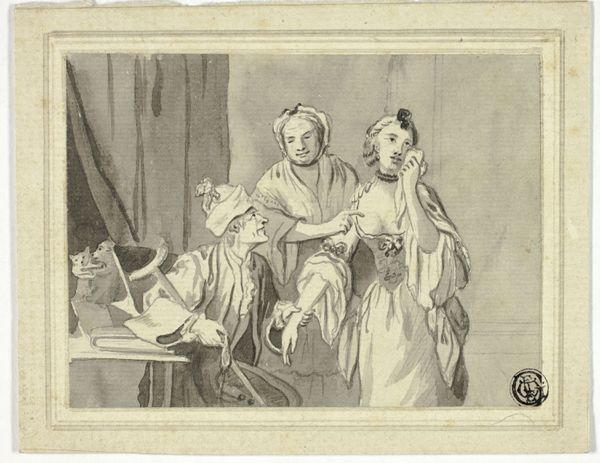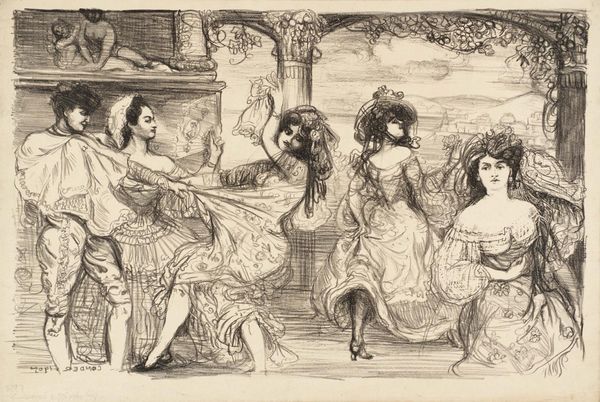
Dimensions: Sheet: 12 1/8 in. × 16 in. (30.8 × 40.6 cm)
Copyright: Public Domain
Editor: Here we have William Paulet Carey's "A Sketch from Nature," created in 1784. It looks to be an etching or engraving. There's such a stark contrast between the figures; some are vibrant and celebrating, while others seem weary or… worse for wear. It definitely makes me a little uneasy. What historical narratives are at play here? Curator: The unease you feel is very much intended. This work satirizes societal attitudes and class dynamics of the late 18th century. The artist, while perhaps not wealthy, has positioned themself to provide an unrequested, almost lurid insight, and that’s exactly where the uncomfortable appeal emerges. Editor: So it's social commentary? What specific aspects of society is Carey critiquing? Curator: Look closely. The composition groups figures according to age and presumed social standing, with the younger, seemingly more "attractive" people engaging in revelry, while older individuals appear dissipated or excluded. Notice the artist’s emphasis is based on exaggerated physical attributes: flushed cheeks, dishevelled clothing, and expressions that suggest a critique of indulgence and moral decay. Is it an embrace of sensuality, or an condemnation of the decline of social morality? Editor: I see that. The older figures *do* look… rather grotesque, almost like caricatures. What role would have prints like this played back then? Was this subversive? Curator: Prints like this were circulated widely, and, they are meant to question authority through mockery. And in those days art academies determined "correct" tastes and they were often promoting moralistic virtue. Carey directly challenges those academies’ didactic role through an erotic lens. We need to examine why some see it as humor, and other’s vulgar. Does it reinforce existing power structures by ridiculing the excesses of certain groups, or does it genuinely offer a progressive critique of societal hypocrisy? Editor: That's a lot to consider! It’s fascinating how a single image can be interpreted in such diverse ways depending on one's perspective and knowledge of the period. I’ll definitely be diving deeper into the history of printmaking and social commentary. Curator: Exactly! It’s about questioning the intentions of art, how institutions promote certain messages, and whose voices get amplified—or silenced.
Comments
No comments
Be the first to comment and join the conversation on the ultimate creative platform.

